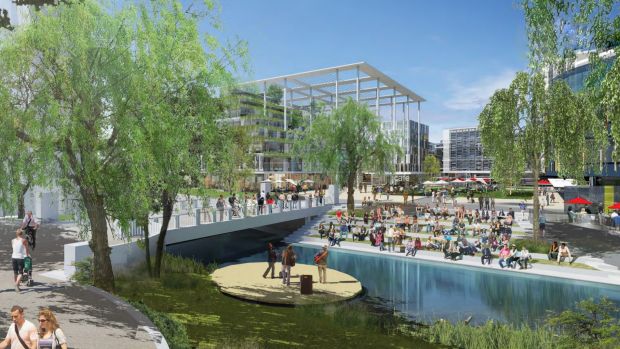It is no secret that O-Week 2017 will be the last to be celebrated in Union Court as we know it. Instead, Reimagining Union Court, the proposed redevelopment of the Union Court and University Avenue area, has been described as ‘the largest single revitalisation the ANU has ever contemplated’ and is set to begin midyear.
With the aim of ‘putting the heart back into campus’ according to Executive Director of ANU Administration and Planning Chris Grange, the project claims to have been designed with consideration of over 20,000 suggestions from students, staff and community members.
However, complaints have already arisen amongst community members over aspects of the project like the relocation of ANU Bar into a centralised flexible entertainment and functions complex. Similarly, the construction of a swimming pool in the recreation building has come under fire over claims that university funds could be better directed towards understaffed services like ANU Counselling, which are known to have week-long waiting lists during peak periods of the year.
Although Union Court itself will not be closed off until midyear, semester one will see the construction of a temporary pop-up village in the green spaces between the Haydon-Allen Building and JC Crawford Building, as well as within Melville Hall. This pop-up village will be home to retail stores, student services and common spaces during construction and development of union court.
ANUSA and PARSA will be amongst the services to be based in Melville Hall, whilst food trucks and temporary housing will accommodate services ranging from chemists to cafes in the outdoor spaces. Suggestions relating to the layout and inclusions of the pop-up village can still be made online on the Reimagine Union Court website.
Funds for the project are being sourced from student accommodation investors Infratil and Commonwealth Superannuation Corporation, who have been awarded a 30-year financial concession and lease arrangement in exchange for providing capital investment to upgrade facilities. Other investors have not yet been publicly named.
We acknowledge the Ngunnawal and Ngambri people, who are the Traditional Custodians of the land on which Woroni, Woroni Radio and Woroni TV are created, edited, published, printed and distributed. We pay our respects to Elders past and present. We acknowledge that the name Woroni was taken from the Wadi Wadi Nation without permission, and we are striving to do better for future reconciliation.
